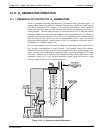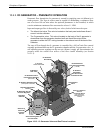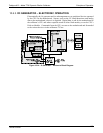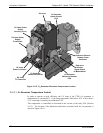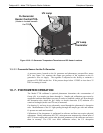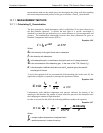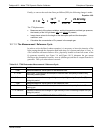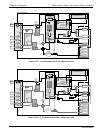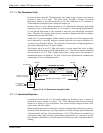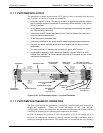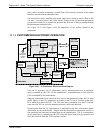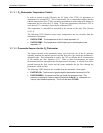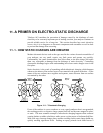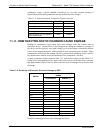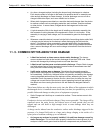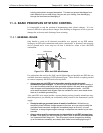
Teledyne API – Model T700 Dynamic Dilution Calibrator Principles of Operation
301
10.7.1.3. The Absorption Path
In the most basic terms, the T700 photometer uses a high energy, mercury vapor lamp to
generate a beam of UV light. This beam passes through a window of material
specifically chosen to be both non-reactive to O
3
and transparent to UV radiation at
254nm and into an absorption tube filled with sample gas.
Because ozone is a very efficient absorber of UV radiation the absorption path length
required to create a measurable decrease in UV intensity is short enough (approximately
42 cm) that the light beam is only required to make one pass through the Absorption
Tube. Therefore, no complex mirror system is needed to lengthen the effective path by
bouncing the beam back and forth.
Finally, the UV passes through a similar window at the other end of the absorption tube
and is detected by a specially designed vacuum diode that only detects radiation at or
very near a wavelength of 254nm. The specificity of the detector is high enough that no
extra optical filtering of the UV light is needed.
The detector reacts to the UV light and outputs a current signal that varies in direct
relationship with the intensity of the light shining on it. This current signal is amplified
and converted to a 0 to 5 VDC voltage analog signal voltage sent to the instrument’s
motherboard where it is digitized. The CPU to be uses this digital data in computing the
concentration of O
3
in the absorption tube.
UV
Source
ABSORPTION TUBE
UV Detector
Sample Gas IN Sample Gas OUT
Window
Window
Absorption Path Length = 42 cm
Photometer
Pre amp
PCA
O-5 VDC analog
signal
to Motherboard
Analog current signal
is output by Detector
Figure 10-19: O
3
Photometer Absorption Path
10.7.1.4. Interferent Rejection
It should be noted that the UV absorption method for detecting ozone is subject to
interference from a number of sources. The T700’s photometer has been successfully
tested for its ability to reject interference from sulfur dioxide, nitrogen dioxide, nitric
oxide, water, and meta-xylene.
While the photometer rejects interference from the aromatic hydrocarbon meta-xylene, it
should be noted that there are a very large number of volatile aromatic hydrocarbons that
could potentially interfere with ozone detection. If the T700 calibrator is installed in an
environment where high aromatic hydrocarbon concentrations are suspected, specific
tests should be conducted to reveal the amount of interference these compounds may be
causing.
06873B DCN6388



